
ASID Membership Directory & Buyers Guide - Designs for Life
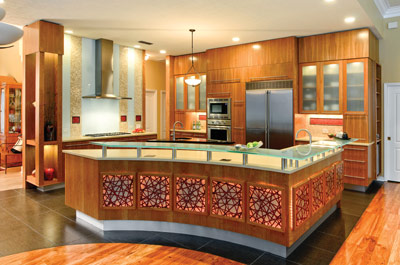
Perhaps one story best sums up why so many ASID members feel fulfilled and rewarded by their work. It’s told by Glenda Wann, ASID, of Glenda Wann Interiors in Jacksonville, a 30-year veteran of the business.
“I worked with the wives of the president and vice president of a large corporation that had relocated to Jacksonville,” Wann recalls. “I worked with them when they bought their first homes here, and then when they moved up to even larger homes. Then, when their husbands passed away, I helped them transition to much smaller spaces in retirement facilities.”
Over a period of decades, Wann has helped families through major life transitions, becoming like a family member herself in the process.” I think that’s the rewarding part,” she says. “When you do a good job, people call you back as their lives change.”
Interior design is one of those professions that requires a high level of intensive training as well as an aesthetic sense that is basically inherent. Yet, many people don’t realize all the skills interior designers must master.
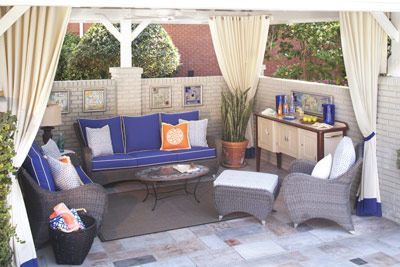 Everyone, of course, has a basic idea of what they like and don’t like in terms of furnishings, colors and accessories. But what everyone doesn’t have is the mathematical skills required for proper space planning, the technical grounding required to understand textiles and finishes and the industry contacts required to access state-of-the-art products.
Everyone, of course, has a basic idea of what they like and don’t like in terms of furnishings, colors and accessories. But what everyone doesn’t have is the mathematical skills required for proper space planning, the technical grounding required to understand textiles and finishes and the industry contacts required to access state-of-the-art products.
The list goes on. Clearly, the ability to appreciate a nice-looking home doesn’t qualify one to be a builder. Likewise, the ability to choose pleasing rugs, carpets and throw pillows doesn’t qualify one to be an interior designer.
In particular, ASID members have years of training and an array of certifications enabling them to deal with issues most of us wouldn’t even think of — from mitigating environmental hazards to designing for different age groups to evaluating safety concerns in the home or workplace.
These, in particular, are areas where ASID really shines. That’s why the organization is a priceless resource for finding an educated and experienced designer who can handle any contingency.
“ASID prepares its members to excel in a dynamic and evolving profession, competing in a global marketplace,” says Florida North Chapter President Brianna Jones, ASID, of Orlando-based Brianna Michelle Interior Design.
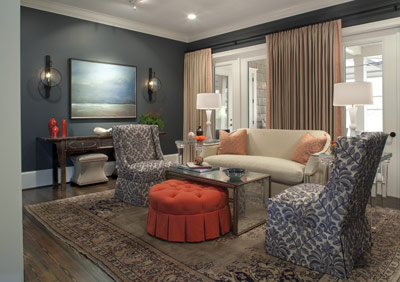 She notes that ASID members must meet an assortment of educational and experience requirements and must adhere to a rigorous code of ethics.
She notes that ASID members must meet an assortment of educational and experience requirements and must adhere to a rigorous code of ethics.
Among other things, the code requires complete transparency in all financial matters. In addition, ASID provides its members access to easy-to-understand, consumer-friendly templates for contracts and agreements. “These strict ethical standards are very important to providing the highest level of professionalism to the consumer,” says Juliana Catlin, ASID, of Jacksonville-based Catlin Interiors.
With about 650 members, the ASID Florida North Chapter encompasses Design Communities in Tallahassee, Pensacola (which includes Panama City and Destin), Orlando, Vero Beach and Jacksonville.
ASID is at the forefront of industry research and is constantly updating its members on emerging trends, such as universal design and aging in place, both of which deal with issues of accessibility.
In addition, members are required to take continuing education courses each year covering such topics as environmental quality, landscape design, office trends, custom product development and home safety.
But does this level of expertise cost a proverbial arm and a leg? That’s a common misconception, say industry experts. A good designer should be able to work within any budget.
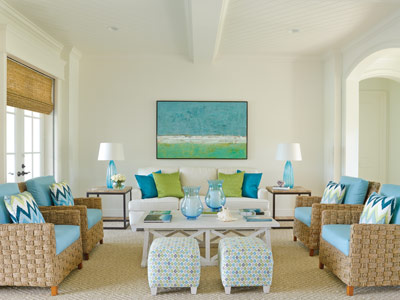 There are no particular rules of thumb because each project is entirely unique. But experts say you should have a general idea of what you want to spend — and what you want to accomplish — so that your designer has some basic parameters.
There are no particular rules of thumb because each project is entirely unique. But experts say you should have a general idea of what you want to spend — and what you want to accomplish — so that your designer has some basic parameters.
Says Jones: “The interior designer, along with the client, can set up a plan in phases so that as time passes and the project proceeds, they can do the things that are most important first and then can fill in when the budget allows.”
Adds Catlin: “Early budget planning and strong communication between the designer and the client on the budget is key to the project’s success.”
Everyone, including designers, has learned to be more creative and to stretch their dollars. Naturally, the more prepared you are, the less money you’ll ultimately spend. So, in addition to asking about your budget, here is a list of other issues your designer will likely want to discuss:
• For whom is the space being designed?
• What activities will take place there?
• How long do you plan to occupy the space?
• When do you want to start work?
• When does the job need to be completed?
• Is there a specific occasion you’re preparing for?
• Are you relocating or will you live in the house during the project?
• What image do you want the space to project? Consider colors, style and feelings that you prefer.
• Do you have furniture, artwork, collectibles, heirlooms or other objects that must be part of the design?
• Who does the cleaning and how?
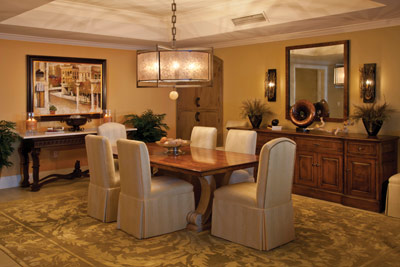 How do you go about selecting an interior designer? One of the first steps is to ask friends or colleagues whom they recommend. Also refer to the list of ASID members on this site.
How do you go about selecting an interior designer? One of the first steps is to ask friends or colleagues whom they recommend. Also refer to the list of ASID members on this site.
Schedule a preliminary consultation to meet with the designer and ask to see samples of his or her work. Keep in mind, say experts, that a good designer should be able to work with any style— so don’t assume designers are strictly limited by the projects that they show you.
Ask about a designer’s background, experience and affiliations. And most importantly, see if his or her personality is a good fit for you, your family and your project.
Once you’ve decided which designer to hire and have discussed budget and compensation, be sure to get a written contract. It’s important to make clear the scope of work, methods of communication, timelines and deadlines and when payments will be due.
Grant E. Gribble, ASID, of Orlando-based Gribble Interior Group sums it up nicely: “Interior designers have a direct impact on the spaces in which people work, play, sleep and eat. That’s a large responsibility and a powerful position to be in, so ASID members must always remain at the top of their game.”
For more information on local ASID designers and industry partners, visit the ASID Florida North Chapter website at asidfloridanorth.com.
